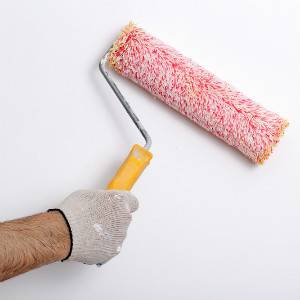Homes built before 1978 often have lead paint - you'll likely want to renovate or make repairs at some point. Test for lead paint before you buy.
If you are planning to purchase a home that was built prior to 1978, you need to be aware of the possibility that the home may contain lead-based paint. Lead paint in homes can be a detriment to your health, which is why the U.S. government banned the use of lead-based paint in homes in 1978. The government also requires that home sellers provide you with real estate lead paint disclosure documents prior to selling a home.
Lead Paint Disclosure
 This disclosure is required because lead is a potential risk to human health. Lead can cause nervous system and brain damage. It can also slow growth in children, headaches, digestive problems, high blood pressure and other issues. Children and pregnant women are typically at the highest risk, but everyone who is exposed to lead is in danger of developing health problems. Small children are at the greatest risk because they tend to put things into their mouths, like paint chips that contain lead.
This disclosure is required because lead is a potential risk to human health. Lead can cause nervous system and brain damage. It can also slow growth in children, headaches, digestive problems, high blood pressure and other issues. Children and pregnant women are typically at the highest risk, but everyone who is exposed to lead is in danger of developing health problems. Small children are at the greatest risk because they tend to put things into their mouths, like paint chips that contain lead.
If you intend to improve or remodel an older home, you also are at a high risk of lead poisoning. If you do work on a rental property, you are required to protect renters from lead. The National Association of Homebuilders reported that state agencies and the Environmental Protection Agency (EPA) have been enforcing this federal paint rule more strictly since 2011 as contractors, landlords and property managers renovate and repair buildings.
EPA Rules for Lead Paint Removal
If you are buying a home, the seller must indicate in writing if the house has lead paint. If the seller has performed a test for lead, the results must be shared with you. You are not required to check a prospective house for lead, but you have the right to do so if you wish. Under the law, real estate agents or home sellers must provide you with the EPA publication entitled "Protect Your Family from Lead in Your Home."
Because you can't tell by looking at paint if it is lead based, it must be tested. While only lead paint that is peeling, cracking or chipping, especially in high-contact spots such as windowsills, banisters and stair railings, poses a risk, keep in mind that you will probably want to improve the home at some point. When old paint is scraped or sanded, it releases lead dust.
Ways to Safely Remove Lead Paint
 Since permanent removal of lead requires an expensive and extensive process, you'll probably want to get the lead test, even if the homeowner claims no knowledge of lead-based paint. Testing is relatively inexpensive and can save you a heap of cash later if you buy a home and find that it has lead-based paint issues.
Since permanent removal of lead requires an expensive and extensive process, you'll probably want to get the lead test, even if the homeowner claims no knowledge of lead-based paint. Testing is relatively inexpensive and can save you a heap of cash later if you buy a home and find that it has lead-based paint issues.
If you do renovate a home with lead paint, you are exempt from the EPA's Renovation Repair and Painting Rule , so no one is going to fine you for not protecting your family, yet I am going to presume you want to protect yourself and your loved ones. You can take steps to prevent lead poisoning such as suggested removal methods, protective clothing and respirators, and proper cleanup and disposal. If you hire a contractor, ask them how they comply with the EPA regulations before they start.
Working with an agent who understands the problems associated with lead paint in homes is a good way to ensure that your real estate purchase is one that is made with all issues on the table. Connect with real estate agents in your area using RealtyNow.
















Write a Comment